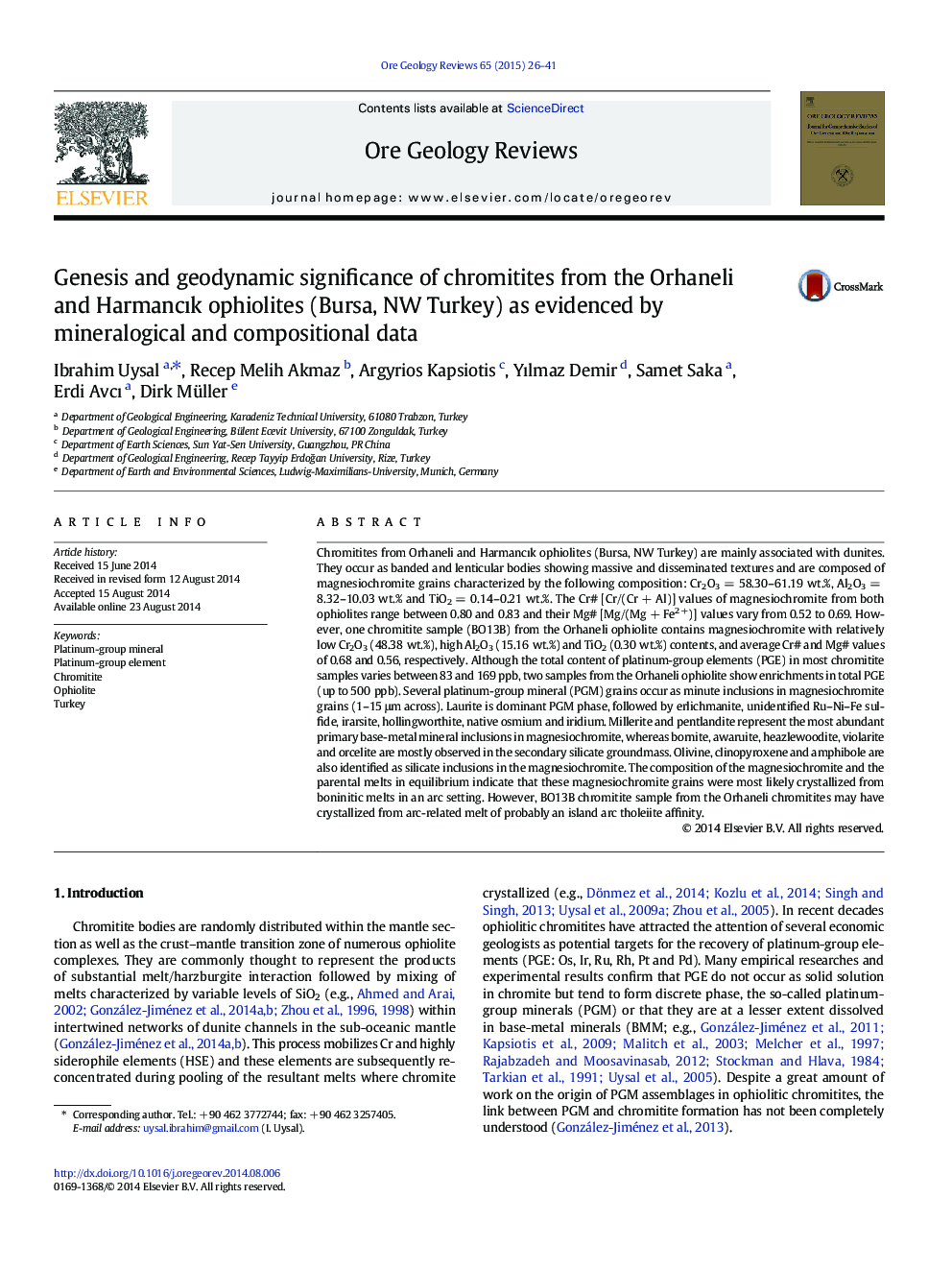| کد مقاله | کد نشریه | سال انتشار | مقاله انگلیسی | نسخه تمام متن |
|---|---|---|---|---|
| 4697246 | 1351868 | 2015 | 16 صفحه PDF | دانلود رایگان |

• Chromitites were formed from a boninite/IAT type melt in a supra-subduction zone.
• IPGE enrichment in chromitites is consistent with laurite dominant PGM inclusions.
• PGM and BMS inclusions indicate chromite crystallization took place down to 1000 °C.
• Secondary PGM were produced by in situ desulfurization and/or dearsenication.
Chromitites from Orhaneli and Harmancık ophiolites (Bursa, NW Turkey) are mainly associated with dunites. They occur as banded and lenticular bodies showing massive and disseminated textures and are composed of magnesiochromite grains characterized by the following composition: Cr2O3 = 58.30–61.19 wt.%, Al2O3 = 8.32–10.03 wt.% and TiO2 = 0.14–0.21 wt.%. The Cr# [Cr/(Cr + Al)] values of magnesiochromite from both ophiolites range between 0.80 and 0.83 and their Mg# [Mg/(Mg + Fe2 +)] values vary from 0.52 to 0.69. However, one chromitite sample (BO13B) from the Orhaneli ophiolite contains magnesiochromite with relatively low Cr2O3 (48.38 wt.%), high Al2O3 (15.16 wt.%) and TiO2 (0.30 wt.%) contents, and average Cr# and Mg# values of 0.68 and 0.56, respectively. Although the total content of platinum-group elements (PGE) in most chromitite samples varies between 83 and 169 ppb, two samples from the Orhaneli ophiolite show enrichments in total PGE (up to 500 ppb). Several platinum-group mineral (PGM) grains occur as minute inclusions in magnesiochromite grains (1–15 μm across). Laurite is dominant PGM phase, followed by erlichmanite, unidentified Ru–Ni–Fe sulfide, irarsite, hollingworthite, native osmium and iridium. Millerite and pentlandite represent the most abundant primary base-metal mineral inclusions in magnesiochromite, whereas bornite, awaruite, heazlewoodite, violarite and orcelite are mostly observed in the secondary silicate groundmass. Olivine, clinopyroxene and amphibole are also identified as silicate inclusions in the magnesiochromite. The composition of the magnesiochromite and the parental melts in equilibrium indicate that these magnesiochromite grains were most likely crystallized from boninitic melts in an arc setting. However, BO13B chromitite sample from the Orhaneli chromitites may have crystallized from arc-related melt of probably an island arc tholeiite affinity.
Journal: Ore Geology Reviews - Volume 65, Part 1, March 2015, Pages 26–41